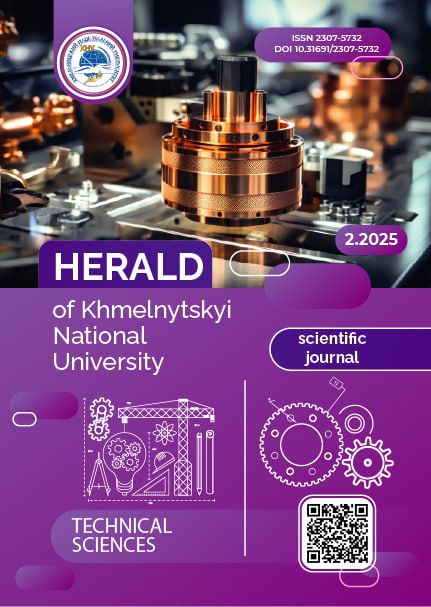A MATHEMATICAL MODEL OF FREQUENCY CONVERTER UTILIZING PARALLEL THYRISTOR INVERTER
DOI:
https://doi.org/10.31891/2307-5732-2025-349-64Keywords:
frequency converter, parallel thyristor inverter, mathematical model, RK45 algorithmAbstract
The article presents a mathematical model of a frequency converter utilizing parallel thyristor inverter that accurately reflects the primary physical processes within the system. The proposed model incorporates the interaction between thyristors, transformers, capacitors, and loads, as well as dynamic changes in currents and voltages during switching events. To achieve this, a binary variable approach is employed to describe the state of the thyristor as an ideal switch. This approach simplifies the modeling process compared to traditional methods, such as replacing the thyristor with RLC circuits with variable parameters, which typically result in stiff differential equations requiring implicit numerical integration methods. By contrast, the binary approach facilitates the use of explicit numerical integration methods, thereby reducing computational complexity.
The proposed model is based on a system of nonlinear differential equations representing electromagnetic processes in circuits with active and reactive elements, magnetic core saturation, and semiconductors with varying dynamic characteristics. Numerical methods, particularly the Runge–Kutta method, are used to solve these equations, ensuring high accuracy in time-domain solutions. The model also introduces logical variables to optimize the representation of thyristor switching operations, reducing the computational burden while maintaining precision.
The introduction of logical variables optimizes the mathematical model, enabling accurate analysis of transient processes while reducing computational costs. Future research directions include investigating the impact of advanced thyristor designs on output signal quality and developing adaptive control algorithms to ensure stable operation under varying conditions. Such advancements are expected to contribute significantly to the reliability, energy efficiency, and versatility of modern power conversion systems.
Downloads
Published
Issue
Section
License
Copyright (c) 2025 ДЕНИС ХОМЮК, ВОЛОДИМИР САМОТИЙ (Автор)

This work is licensed under a Creative Commons Attribution 4.0 International License.

